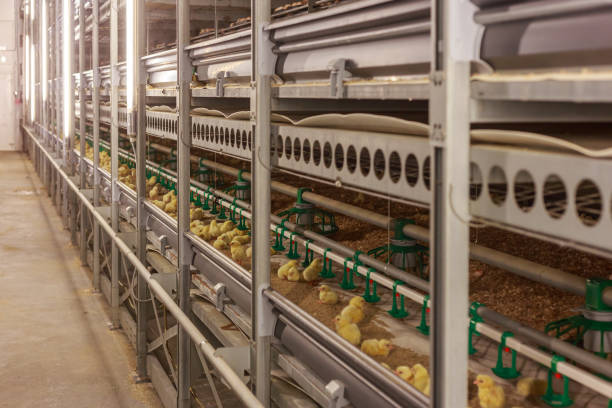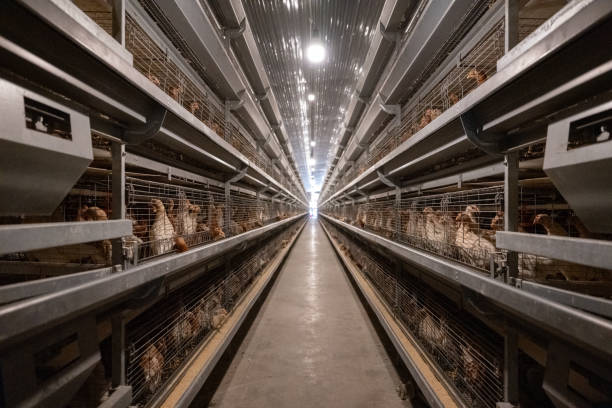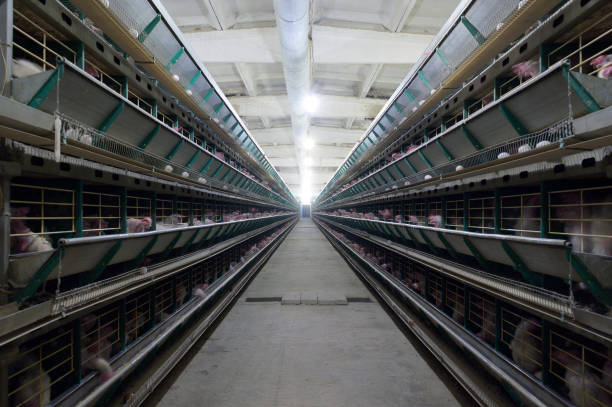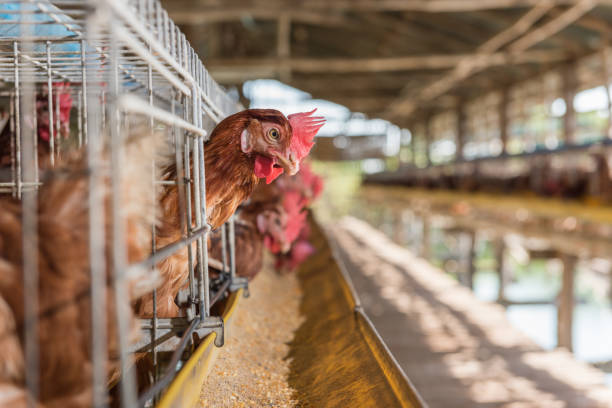
Optimizing Your Zambian Poultry Farm: 50,000 Bird Cage Systems
Optimizing Your Zambian Poultry Farm: 50,000 Bird Cage Systems
Zambia’s poultry industry is experiencing significant growth, driven by increasing local demand for chicken and eggs. For farmers looking to scale up their operations, particularly to the 50,000-bird level, efficient and well-designed cage systems are crucial. This article provides a comprehensive guide to optimizing your Zambian poultry farm with a 50,000-bird cage system, covering key aspects from selecting the right system to maximizing productivity and profitability.
**Understanding the Zambian Poultry Market**
Before diving into the specifics of cage systems, it’s essential to understand the dynamics of the Zambian poultry market. Consider factors like:
* **Local Demand:** Research the demand for eggs and chicken meat in your target market. Are you focusing on supplying Lusaka, the Copperbelt, or other regions? Knowing your customer base allows you to tailor your production accordingly.
* **Competition:** Analyze the existing poultry farms in your area. What are their strengths and weaknesses? How can you differentiate your product or offer a better price?
* **Feed Costs:** Feed represents a significant portion of your operational costs. Explore different feed suppliers and formulations to optimize feed efficiency and minimize expenses. Consider locally sourced ingredients to potentially reduce costs.
* **Regulations and Permits:** Familiarize yourself with the relevant regulations and permits required for operating a poultry farm in Zambia. Compliance is essential for avoiding penalties and ensuring smooth operations.
By grasping these basic facts, you can better structure your farm and set it up for the best chance of profitability to succeed.
**Choosing the Right Cage System: Layer vs. Broiler**
The first critical decision is whether to focus on egg production (layers) or meat production (broilers). This choice will significantly impact the type of cage system you need.
* **Layer Cages:** Designed for housing laying hens, layer cages provide individual or group spaces for the birds to lay eggs comfortably. Features like sloped floors for easy egg collection, automated feeding and watering systems, and manure removal systems are crucial for efficient egg production.
* **Broiler Cages:** Broiler cages are designed for raising chickens for meat. These cages prioritize floor space and ventilation to promote rapid growth and minimize disease spread. Broiler cages are often simpler in design compared to layer cages, focusing on maximizing bird density while ensuring adequate welfare.
For a 50,000-bird operation, you can even consider a hybrid approach, raising both layers and broilers if market conditions allow. But to start it’s important to fully research and concentrate on one or the other.
**Types of Cage Systems: A Detailed Look**
Once you’ve determined your focus (layers or broilers), you need to choose the specific type of cage system. Here’s an overview of common types:
* **A-Frame Cages:** These are among the most popular in Zambia due to their cost-effectiveness and relatively simple design. A-frame cages offer tiered rows of cages with a sloping roof-like structure. They are relatively easy to manage and install, but manure removal can be more labor-intensive.
* **H-Frame Cages:** H-frame cages are more advanced, featuring a vertical structure with cages stacked on top of each other. They offer better space utilization compared to A-frame cages and often incorporate automated feeding and manure removal systems, reducing labor costs. H-frame cages represent a stronger cost investment, as the equipment is a step up in technology.
* **Vertical Layer Cages:** This is a more modern system that is more appropriate for a larger scale. These cages allow for the highest space usage, and come with automatic drinking, feeding, egg collection and manure removal facilities. This maximizes efficiency and greatly reduces labor requirements.

* **Battery Cages:** While increasingly scrutinized due to welfare concerns, battery cages are smaller, individual cages designed to maximize bird density. They are often the most economical option for large-scale operations but may face criticism from animal welfare groups. A lot of countries now regulate the usage of battery cages, so it’s important to check the local laws.
* **Manure Removal Systems:** Efficient manure removal is vital for maintaining hygiene and reducing ammonia levels in the poultry house. Options include:
* *Manual Scraping:* Labor-intensive but suitable for smaller operations.
* *Belt Systems:* Automated systems that use belts to transport manure out of the poultry house.
* *Scraper Systems:* Utilize scrapers to push manure into a collection pit.
* *Flushing Systems:* Use water to flush manure out of the poultry house (requires proper drainage).
**Designing Your Poultry House: Key Considerations**
The design of your poultry house is as important as the cage system itself. Key factors to consider include:
* **Ventilation:** Adequate ventilation is crucial for maintaining air quality, removing moisture and ammonia, and regulating temperature. Natural ventilation can be effective in some climates, but mechanical ventilation (fans) is often necessary for larger operations, especially in Zambia’s hotter regions.
* **Lighting:** Proper lighting is essential for stimulating egg production in layers and promoting growth in broilers. LED lighting is energy-efficient and allows for precise control over light intensity and duration.
* **Temperature Control:** Maintaining a stable temperature is critical for bird health and productivity. Insulation, ventilation, and heating/cooling systems may be necessary depending on your location and climate.
* **Biosecurity:** Implement strict biosecurity measures to prevent disease outbreaks. This includes controlling access to the farm, disinfecting equipment, and implementing a vaccination program.
* **Space Requirements:** Ensure sufficient space for the birds to move comfortably and access feed and water. Overcrowding can lead to stress, disease, and reduced productivity.
**Feeding and Watering Systems: Optimizing Nutrient Intake**
Efficient feeding and watering systems are essential for providing birds with the nutrients they need to thrive.
* **Feeding Systems:**
* *Chain Feeding Systems:* Distribute feed evenly throughout the cages using a moving chain.
* *Auger Feeding Systems:* Use a screw-like auger to transport feed from a storage bin to the cages.
* *Manual Feeding:* Labor-intensive but suitable for smaller operations.
* **Watering Systems:**
* *Nipple Drinkers:* Provide a constant supply of clean water and minimize spillage.
* *Trough Drinkers:* Simple and cost-effective but can be prone to contamination.
* *Cup Drinkers:* Offer a good balance between hygiene and cost.
Ensure that your feeding and watering systems are properly maintained and adjusted to meet the changing needs of your birds.
**Egg Collection and Handling (for Layer Farms)**

For layer farms, efficient egg collection and handling are crucial for minimizing breakage and maintaining egg quality.
* **Manual Collection:** Labor-intensive but suitable for smaller operations.
* **Automated Egg Collection Systems:** Use conveyor belts to transport eggs from the cages to a central collection point. These reduce labor costs and minimize egg handling.
* **Egg Grading and Sorting:** Implement a system for grading and sorting eggs based on size and quality.
* **Egg Storage:** Store eggs in a cool, humid environment to maintain freshness.
**Maximizing Productivity and Profitability: Best Practices**
Beyond the hardware, adopting best practices for poultry management is critical for maximizing productivity and profitability.
* **Breed Selection:** Choose a breed that is well-suited to the Zambian climate and market conditions. Research different breeds and their performance characteristics.
* **Feed Management:** Optimize feed formulations to meet the birds’ nutritional needs at each stage of life. Monitor feed consumption and adjust rations as necessary.
* **Health Management:** Implement a comprehensive health management program, including vaccination, parasite control, and regular veterinary checkups.
* **Record Keeping:** Maintain detailed records of feed consumption, egg production, mortality rates, and other key performance indicators. Use this data to identify areas for improvement.
* **Staff Training:** Invest in training your staff on proper poultry management practices. Well-trained staff can significantly improve productivity and reduce losses.
* **Waste Management:** Develop a plan for managing poultry waste responsibly. Manure can be used as fertilizer or processed into biogas.
**Working with Livi Machinery: Your Partner in Poultry Success**
Selecting the right equipment supplier is crucial for the success of your poultry farm. Livi Machinery is a leading supplier of egg-laying chicken cages and broiler chicken cages in African countries, including Zambia. Here’s why you should consider partnering with us:

* **High-Quality Products:** We offer a wide range of durable and reliable cage systems designed to meet the specific needs of Zambian poultry farmers.
* **Customized Solutions:** We can customize cage systems to fit your specific poultry house dimensions and production goals.
* **Competitive Pricing:** We offer competitive pricing on our products without compromising on quality.
* **Excellent Customer Service:** Our experienced team provides excellent customer service, from initial consultation to installation and after-sales support.
* **Local Support:** We have a network of local partners in Zambia to provide on-site support and maintenance.
**Conclusion: Investing in Your Poultry Future**
Optimizing your Zambian poultry farm with a 50,000-bird cage system requires careful planning, investment, and a commitment to best practices. By choosing the right cage system, designing your poultry house effectively, and implementing sound management practices, you can significantly improve productivity, profitability, and the long-term sustainability of your poultry operation. Partnering with a reliable equipment supplier like Livi Machinery can provide you with the tools and support you need to succeed in the growing Zambian poultry market.
Remember to continuously monitor your operation, adapt to changing market conditions, and invest in ongoing training and improvements to stay ahead of the competition. The Zambian poultry industry offers significant opportunities for growth and profitability, and with the right approach, you can build a successful and sustainable poultry farm.
